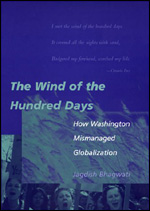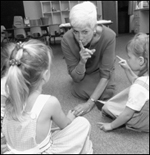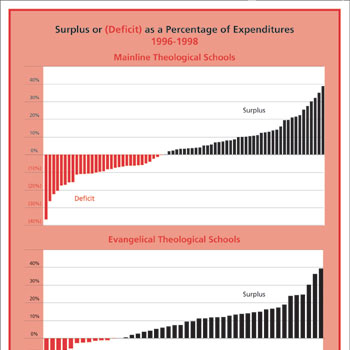In the semi-precious groves of academe there are few certainties on which all agree. Human experience yields only a few dicta which can be affirmed without fear of contradiction. One such certainty, one that even academics affirm, stands out: There is no substitute for having the right tool. As proof of this I adduce the chintzy tire irons that come as the handle for tire jacks of compact cars that are supposed to double as tire wrenches to remove lug nuts. Bah. These trifling tools pale into uselessness when compared to the full-fledged four-pronged behemoth wrench for use on every vehicle from the anemic Toyota Tercel to the burly Mercedes-Benz SUV. The right tool, indeed–yes, therein lies a rare pearl of certitude.
| Expenditure Proportions and Trends |
| View |
| Equity Ratio |
| View |
As board members and presidents of graduate schools of theology you need the right tool to analyze, assess, understand, and plan strategically for the institution entrusted to your care. Is there such a tool for board members and administrators of schools? Voila, the Strategic Information Report. This tool is the Swiss Army knife of gauging theological school financial health for trustees and presidents. It is better than the gadgets hawked on late night television that slice, dice, pare, prepare, skin, skim, scrape, and core any apple, carrot, or avocado that crosses a butcher block–plus, this one works after you buy it.
And that’s not all. It is given to every accredited school free every two years. The SIR, designed after extensive testing by Auburn Theological Seminary and made available through the ATS, “presents information to help you assess your institution’s strength, stability, and position.”
Since the SIR offers a quantitative analysis of finances and enrollment, it’s surprising that few graduate schools of theology use it to its potential. Maybe that’s because it has been available for less than five years, or maybe that few governing boards are aware of its presence on the president’s bookshelf.
|
Results of operations |
Naturally, correct information is the first key to analyzing a school. Then one needs to see what trends play out over a period of years–minimally three, better five or ten. A trend tells us in what direction an institution is going.
Together, the analysis of “Statement of Financial Position” and the “Statement of Activities,” found in the SIR‘s first and largest part, sketch an institution’s financial condition. The second part focuses on enrollment. These are the two arteries nourishing the school’s heart. A serious problem with one or both spells institutional disaster. What is especially helpful about SIR is that the provided information not only expresses data but also enables the reader to interpret its meaning.
|
Revenue Proportion and Trends |
To get a handle on how best to use this resource, look at the five key charts included with this article.
Other enrollment charts enable a school to chart trends over the years by academic program, acceptance rates, retention, and demographic composition. These enable institutional planning for program as well as enrollment.
A concluding narrative of the SIR presents an invaluable summary for the “statistically challenged.” It summarizes what the analysis means for a particular institution. A trustee or president can then compare apples to apples–a rare experience anywhere, but especially in the academy. And a concluding supplement presents a very informative statement on endowment spending rate.
|
Enrollment Trends Compared to Similar Schools |
The SIR is a splendid catalyst to trigger focused strategic planning in light of its analysis of the finances and enrollment of the institution. A president and the board of trustees need to carry this strategic information in their minds much as they carry the Scriptures in their hearts.
Due to the graphic intense nature of the article please download pdf file to see charts.
Sources
All data included in these charts was provided by ATS and comes from the data of a real school.
Such numbers are part of the remarkable database the Association of Theological Schools offers trustees, presidents, and theological educators. Two other essential documents are the Fact Book of Theological Education—also free to member schools—and the Institutional Peer Profile, which enables a theological school to compare itself to up to nine of its peers.




























